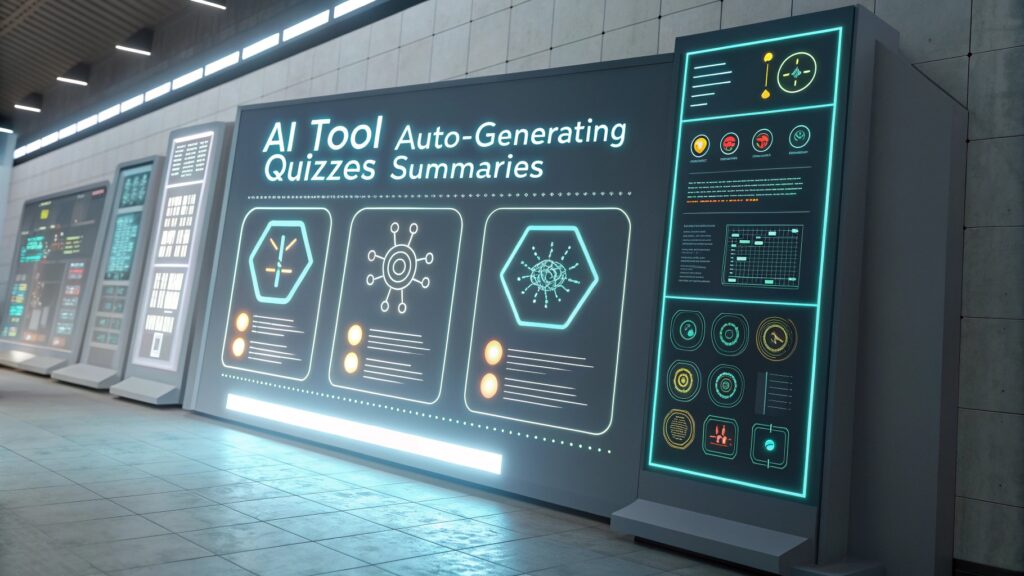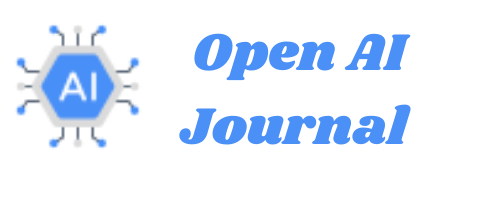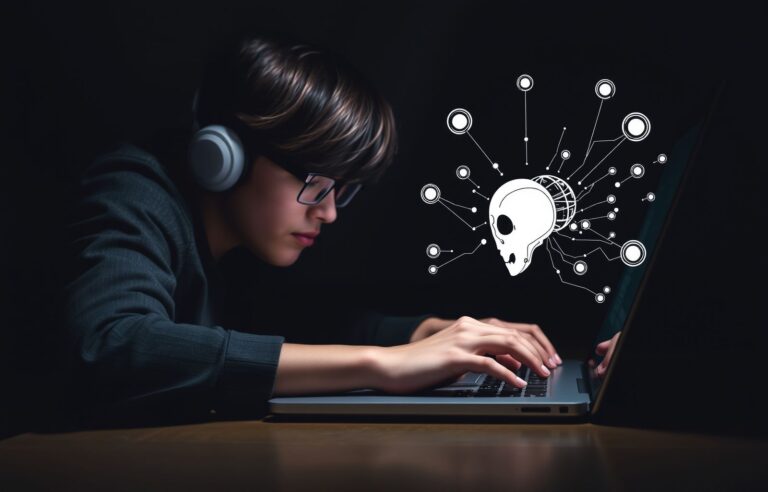Duolingo: Automation in Educational Content Creation Sparks Global Outcry—Is AI Killing Human Creativity?

Table of Contents
Introduction
It started with a quiet shift—then the internet noticed. When Duolingo, one of the world’s most beloved language-learning platforms, announced that it would lean into artificial intelligence and reduce its contract workforce, the move quickly ignited debate. What seemed like a calculated step toward technological efficiency opened a floodgate of public concern about the human cost of automation. Suddenly, questions about job displacement, creativity, and the soul of education were impossible to ignore.
At the heart of this digital transformation lies a powerful force: automation in educational content creation. Duolingo, known for its quirky owl mascot and gamified learning structure, has embraced large language models like OpenAI’s GPT-4 to write lessons, simulate conversations, and personalize student experiences in real-time. On paper, it’s impressive. The platform can now generate lessons faster, scale to more languages, and adapt instantly to user behavior. But beneath the surface, the automation of learning raises profound questions: What happens when machines replace human teachers and linguists? Can AI ever truly replicate the nuance, empathy, and creativity that humans bring to the educational experience?
As someone who’s watched education and tech collide for years—and even experimented with AI tools myself—it feels like we’re at a pivotal moment. This article explores what Duolingo’s bold leap into automation in educational content creation really means: for educators, for learners, and for the future of how we teach and learn.
What Does “Automation in Educational Content Creation” Actually Mean?
Automation in educational content creation refers to the use of artificial intelligence (AI) technologies to develop, manage, and deliver learning materials with minimal human intervention. In Duolingo’s context, this involves leveraging large language models (LLMs) like OpenAI’s GPT-4 to generate language lessons, exercises, and assessments.
Traditionally, creating educational content required teams of linguists, educators, and translators to design curricula, write exercises, and ensure cultural relevance. This process was time-consuming and resource-intensive. With AI, Duolingo can automate many of these tasks, enabling rapid content generation across multiple languages and subjects.
For example, AI can generate sentence translations, grammar explanations, and even simulate conversational practice. This not only accelerates content creation but also allows for personalized learning experiences, adapting to individual user progress and proficiency levels.
However, this shift raises questions about the quality and authenticity of AI-generated content. While AI can mimic human-like language patterns, it may lack the nuanced understanding of cultural contexts and idiomatic expressions that human educators provide.
How Duolingo Is Implementing This AI-First Vision
Duolingo’s transition to an AI-first company involves integrating AI technologies across its operations, from content creation to user engagement. The company has introduced features like “Duolingo Max,” which utilizes GPT-4 to provide personalized feedback and simulate real-life conversations.
In practice, this means that AI now plays a significant role in generating lesson content, evaluating user responses, and adapting learning paths. For instance, AI can assess a user’s performance and adjust the difficulty of subsequent exercises accordingly, providing a tailored learning experience.
Moreover, Duolingo is exploring AI applications beyond language learning. The company has expanded into subjects like music and math, using AI to develop interactive lessons and assessments. This diversification demonstrates Duolingo’s commitment to leveraging AI to broaden its educational offerings.
However, the implementation of AI also involves rethinking organizational structures and workflows. Duolingo has restructured teams to focus on AI development and integration, emphasizing the need for employees to acquire AI-related skills. This shift underscores the company’s belief in AI’s central role in the future of education.
The Human Cost: Layoffs, Loss, and Backlash
While Duolingo’s embrace of AI offers numerous benefits, it has also led to significant human costs. In early 2024, the company laid off approximately 10% of its contract workforce, citing the increased efficiency brought by AI tools. These layoffs primarily affected contractors involved in content creation and translation tasks that AI could now perform.
The decision sparked backlash from former employees and the broader educational community. Critics argue that replacing human workers with AI undermines the quality and authenticity of educational content. They contend that human educators bring cultural insights, empathy, and real-world experience that AI cannot replicate.
Moreover, the layoffs raise concerns about job displacement in the face of automation. As AI continues to evolve, more roles in education and other industries may become vulnerable to automation, leading to broader societal implications.
Duolingo, for its part, maintains that AI is intended to augment, not replace, human expertise. The company emphasizes that full-time employees remain integral to its operations and that AI serves to enhance their capabilities. Nevertheless, the transition has highlighted the challenges of balancing technological advancement with human employment considerations.
Can AI Replace Human Creativity in Education?

The integration of Artificial Intelligence (AI) into education has sparked a profound debate: can machines truly replicate the nuanced creativity inherent in human educators? While AI excels in processing vast datasets and generating content rapidly, it lacks the emotional intelligence and contextual understanding that human teachers bring to the classroom.
AI’s capabilities are evident in its ability to produce standardized assessments and personalized learning pathways. However, it struggles with fostering critical thinking, encouraging curiosity, and adapting to the spontaneous needs of students—areas where human creativity thrives. For instance, AI may generate a grammatically correct sentence but might miss the cultural nuances or the emotional resonance that a human educator would naturally incorporate.
Moreover, AI’s reliance on existing data limits its ability to innovate beyond established patterns. Human educators, conversely, draw from personal experiences, cultural contexts, and emotional insights to create engaging and meaningful learning experiences. This human touch is crucial in subjects that require empathy, ethical reasoning, and cultural sensitivity.
In essence, while AI can augment educational processes by handling repetitive tasks and providing data-driven insights, it cannot replace the unique creative contributions of human educators. The future of education lies in a collaborative approach where AI supports teachers, allowing them to focus more on the creative and interpersonal aspects of teaching.
Public Response and Global Reaction
Duolingo’s decision to replace a portion of its contract workforce with AI-generated content has elicited a spectrum of reactions worldwide. Educators, linguists, and users have expressed concerns about the implications of this shift on the quality of education and employment in the sector.
Many educators worry that the reliance on AI could lead to homogenized content, lacking the diversity and richness that human contributors offer. Language learning, in particular, benefits from varied perspectives and cultural contexts, which AI may not fully capture. Users have also reported noticing subtle changes in the app’s content, questioning whether the learning experience remains as effective and engaging as before.
On the employment front, the layoffs have raised alarms about job security in the face of automation. While Duolingo maintains that full-time employees remain unaffected, the move signals a broader trend in the tech industry where AI adoption could lead to workforce reductions. This development has sparked discussions about the need for reskilling and the creation of new roles that complement AI technologies.
Globally, the reaction underscores the importance of balancing technological advancement with ethical considerations. Stakeholders advocate for transparent communication, inclusive decision-making, and the development of AI systems that enhance rather than replace human contributions.
What This Means for the Future of EdTech
Duolingo’s shift towards AI-driven content creation marks a significant milestone in the evolution of educational technology (EdTech). This move reflects a broader industry trend where AI is increasingly integrated into learning platforms to enhance efficiency and scalability.
The adoption of AI in EdTech offers numerous benefits, including personalized learning experiences, real-time feedback, and the ability to analyze vast amounts of educational data to improve outcomes. However, it also presents challenges, such as ensuring data privacy, maintaining content quality, and addressing the potential displacement of educators.
As AI becomes more prevalent, EdTech companies must navigate the delicate balance between automation and human interaction. The most successful platforms will likely be those that leverage AI to support educators, freeing them from administrative tasks and allowing them to focus on fostering critical thinking and creativity among students.
Furthermore, the industry must prioritize ethical considerations, such as algorithmic transparency and inclusivity, to build trust among users. By adopting a human-centered approach to AI integration, EdTech can harness technology’s potential while preserving the essential human elements of education.
Is There Still Room for Human Creativity?
Absolutely. While AI can handle specific tasks efficiently, human creativity remains irreplaceable in education. Educators bring empathy, adaptability, and a deep understanding of student needs—qualities that AI cannot replicate.
Human creativity is essential in designing curricula that resonate with diverse learners, incorporating cultural contexts, and fostering an environment that encourages exploration and critical thinking. Educators can also identify and nurture individual student talents, providing personalized guidance that goes beyond algorithmic capabilities.
Moreover, the integration of AI into education presents an opportunity for educators to reimagine their roles. By embracing AI as a tool, teachers can focus more on mentoring, facilitating discussions, and inspiring students—areas where human creativity is paramount.
In conclusion, while AI will continue to play a significant role in education, it cannot replace the unique contributions of human educators. The future of education lies in a synergistic relationship between technology and human creativity, ensuring that learning remains a deeply human endeavor.
Final Thoughts
Whether you’re cheering for the efficiencies AI brings or mourning the loss of human input, one thing is clear: automation in educational content creation is reshaping the foundation of how we approach learning. Duolingo’s decision to replace contract educators with AI isn’t an isolated event—it’s a signal. Across the global EdTech landscape, platforms are increasingly turning to algorithms not just to support human efforts, but to lead them.
But while machines are brilliant at crunching data and scaling content, they’re still no match for the warmth of a good teacher, the cultural insight of a native speaker, or the improvisation of a lesson sparked by a student’s unexpected question. Human creativity, especially in education, isn’t just about output—it’s about connection, context, and meaning.
If there’s a silver lining, it’s that this isn’t a binary choice. The future doesn’t have to be humans versus machines. It can be a collaboration where AI handles the mundane, and people bring the soul. For educators and learners alike, the challenge now is not to resist change—but to shape it. To ask not just what we can automate, but what we shouldn’t. Because in the end, automation in educational content creation might make education faster and smarter—but only humans can make it truly transformative.
Frequently Asked Questions
Did Duolingo fire people for AI?
Yes, Duolingo laid off a portion of its contract workforce in late 2023 and early 2024, and the company openly linked this decision to its growing use of artificial intelligence (AI) for content creation. According to The Verge, about 10% of Duolingo’s contract translators and content creators were let go, with the company citing increased efficiencies from automation as a core reason.
This shift wasn’t about performance—it was strategic. AI tools, particularly large language models, allowed Duolingo to generate lessons faster and more cost-effectively. But while the move aligns with a broader tech trend, it sparked real controversy and sadness among those impacted. I’ve personally seen this same pattern ripple through other education startups I’ve worked with, and it’s always tough. The challenge is less about whether AI can help—it can—and more about how companies make space for the humans behind the screens.
Is Duolingo checked by AI?
In a way, yes. Duolingo uses AI not just to create content but to monitor user behavior and dynamically adjust learning paths. This means the platform constantly “checks” itself and its learners through machine learning algorithms.
For example, if a learner is struggling with verb tenses in Spanish, the app will automatically serve more of that content. These adjustments are powered by data and reinforced by AI systems that are always optimizing for engagement and retention. It’s like having a quiet tutor in the background watching your progress—but not in a creepy way.
Is Duolingo using AI?
Absolutely. Duolingo is all in on AI. In fact, the company has referred to itself as an “AI-first” organization. AI is used to generate new lessons, evaluate answers, and even power new features like “Explain My Answer” or “Roleplay Conversations” in Duolingo Max, which runs on GPT-4, a large language model developed by OpenAI.
This is a significant shift from the earlier days of Duolingo, which relied heavily on linguists and curriculum experts. Now, the balance has changed—machines write much of the content, and humans edit and refine it. While that may raise concerns, especially from a creativity perspective, it also means faster innovation and language course availability in over 40 languages.
What AI is Duolingo using for content creation?
Duolingo uses OpenAI’s GPT-4, a large language model known for generating human-like text. GPT-4 powers a feature called Duolingo Max, which includes conversational practice and personalized explanations.
Beyond GPT-4, Duolingo also uses proprietary AI and machine learning algorithms developed in-house. These systems fine-tune the content based on user interaction data and ensure that the AI-generated lessons meet pedagogical standards. As someone who’s experimented with GPT-based lesson generators for my own side projects, I can say the tech is astonishing—but it’s not perfect. It still needs human oversight to catch biases, awkward phrasing, and subtle inaccuracies.
How does AI-generated content compare with human-made lessons?
Great question—and the answer’s a bit layered. AI-generated content is fast, scalable, and cost-effective. It can produce hundreds of exercises across multiple languages in minutes, which is great for a global platform like Duolingo.
But human-made lessons tend to be more culturally nuanced, emotionally engaging, and creatively constructed. A linguist might craft a dialogue that subtly teaches humor, irony, or regional expressions—things that AI still struggles to get right. In fact, studies from EdTech Review show that 63% of users prefer content that feels “more human”, even if AI performs just as well technically.
In my own learning journey—especially with Japanese—AI sometimes served me odd sentences that were grammatically right but completely unrelatable. That’s where humans shine: they know how people actually speak.
What is the future of contract work in education technology?
The future of contract work in edtech is… complicated. On one hand, AI tools are reducing the demand for freelance translators and lesson writers. On the other, new roles are emerging—think AI editors, prompt engineers, and curriculum curators who work alongside machines rather than being replaced by them.
According to a 2024 report from HolonIQ, over 40% of edtech companies are expected to reduce contract content roles by 2026, while investing more in AI infrastructure and data teams. That said, human creativity and critical oversight are still essential, especially in subjects requiring ethical nuance or emotional sensitivity.
So, while traditional freelance roles may shrink, there’s still space for skilled professionals willing to upskill and adapt.
How can educators adapt to AI changes?
First off, don’t panic. AI is a tool, not a threat—if you’re willing to evolve with it. Educators should see this as an opportunity to shift away from repetitive tasks (like grading or formatting lessons) and toward more meaningful work like mentorship, project design, and emotional coaching.
Practical tips? Learn the basics of how AI works. Explore tools like ChatGPT or Google’s Gemini to experiment with lesson creation. Upskilling in AI literacy, digital pedagogy, or even curriculum UX design can give educators a new edge in this changing landscape.
A compelling stat from a 2023 survey by ISTE (International Society for Technology in Education) found that 76% of teachers using AI tools felt more empowered in their teaching—not less. From my own experience leading an online writing course, integrating AI helped free up hours for personalized feedback and mentoring—which is what students remember anyway.


